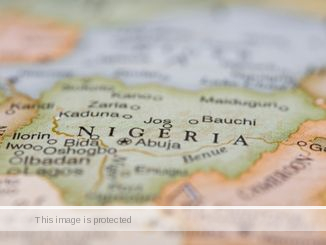Oil Palm Farming and Production Steps in Nigeria (2024 Guide)
In oil palm farming, Nigeria is among the largest producers of palm oil, which is extracted from the fleshy mesocarp of the palm fruit and has been a vital resource in most diet.
The global need for palm oil is fast increasing because of an increase in population globally.
The most economical crop and source of cooking oil is the oil palm, which yields a higher quantity of cooking oil (vegetable oil) when compared to other sources (rapeseeds which are touted as the primary source of vegetable oil in Europe).
Palm oil is highly rich in carotene and is an essential cooking oil in Nigeria.
Primary raw materials used for producing detergents, soap, margarine, confectionery, epoxy resins, bakery trade, etc. come from Palm oil.
It also serves as additives in animal feed.
In present times, the manual method of palm oil processing has been transformed into a mechanically operated mill using modern processing equipment.
The de-husked palm fruits are conveyed for processing.
The entire process of the modern palm oil mills has made it more comfortable and efficient because of machines that have taken over.
Because of this mechanization efforts, small-scale or subsistent producers of palm oil now prefer to sell their palm fruit to established producers who use a mechanized production system.
Oil Palm States in Nigeria
These are the states with the highest number of oil palm plantations in Nigeria.
- Abia
- Akwa Ibom
- Anambra
- Bayelsa
- Cross Rivers
- Delta
- Ebonyi
- Edo
- Ekiti
- Imo
- Lagos
- Ondo
- Osun
- Oyo
- Rivers
Steps to Growing Oil Palm in Nigeria
Here are the steps to take to start oil palm farming in Nigeria:
- Farmland Site Selection
- Soil Preparation
- Choosing of Oil Palm Variety to Grow
- Equipment
- Irrigation
- Climatic Conditions
- Nursery Preparation and Management
- Transplanting of Seedlings to Field
- Weed Control
- Fertilizer and Manure Management
- Management of Pests and Diseases
- Harvesting
- Processing of Oil Palm Products
- Marketing
Farmland Suitable for Oil Palm Cultivation
The farmland to be used for the growing of oil palm should be acquired because oil palm is a perennial crop.
Do not get a farmland on a short lease.
The farmland should also have fertile soil.
The farmland should have good roads for easy evacuation of the oil palm produce after harvest.
Climatic Conditions Suitable for Oil Palm Farming
Oil palms grow well in areas or regions with wet climatic conditions.
Oil palm grows well with a temperature of 21 – 3 Celsius.
Oil palm needs about 6 hours of sunlight every day.
It also needs an abundant water supply.
The annual rainfall needed for the cultivation and growing of oil palm is 2,000mm to 4,500mm, dispersed throughout the year.
Without adequate water, the oil palms will not do well.
It is a water hungry crop, though it can tolerate drought.
Oil palm needs a humidity level of 70% – 100% for it to grow well.
Soil Suitable for Oil Palm Plantation
Oil palm can tolerate soils with a pH of 4.0 – 7.0.
This crop can grow in almost as many crops, but you should grow your oil palm in a fertile soil rich in humus.
Avid waterlogged soil, as this can cause root rot for the oil palm trees.
For soil that is acidic, you can amend the soil with the use of limestone, dolomite or agrilime.
Oil Palm Varieties
The four major oil palm varieties that can be planted in Nigeria are:
- The Nigerian Oil Palm Variety
- Tenera
- Pisifera
- Dura
Pests and Diseases of Oil Palm
- Aphids
- Caterpillars
- Die Back Disease
- Mealybugs
- Mirids
- Nematodes etc.
- Oil Palm Canker Disease
- Oil Palm Swollen Shoot Disease
- Termites
Equipment
These are the equipment needed for oil palm farming:
- Boom Sprayer
- Cutlasses
- Earth Augers
- Farmhouse
- Harrowers
- Hoes
- Motorized Sprayers
- Oil Palm Harvester
- Plough
- Power Tiller
- Tractors
- Weeders
Mechanization is more costly and labour efficient than manual labour.
Cost of Oil Palm Farming Per Hectare in Nigeria
- Acquisition of one hectare farmland: ₦90,000 – ₦350,000
- Surveying and Land Documentation: ₦90,000 – ₦190,000
- Clearing, Ploughing and Harrowing: ₦45,000
- Seedlings: ₦41,000
- Planting: ₦11,000
- Irrigation: ₦290,000 – ₦640,000 (Optional)
- Fertilizers and Manure: ₦20,000 – ₦100,000 (Depending on soil fertility)
- Pesticides: ₦22,000
- Others: ₦90,000
Yield of Oil Palm
The yield of oil palm depends on the soil type, climate, use of irrigation, types of fertilizers used, and other agricultural practices.
One hectare of oil palm can yield 9 – 13 tons after 3 – 8 years of planting.
The yield of oil palm increases every year.
In the 8 – 9th year, the yield can increase by over 100%.
Benefits of Oil Palm Production
These are the advantages of having an oil palm plantation:
- It can provide employment opportunities.
- Oil palm products can be exported to improve the foreign reserves of Nigeria.
- It can provide lifelong income for farmers.
- The planting of oil palm trees can absolve excess carbon from the atmosphere and reduce the effects of the depletion of the ozone layer.
- Oil palm trees are assets that cannot be stolen.
- Oil palm produce can be used as food for human and animals.
Difficulties in Palm Oil Production in Nigeria
Here are the challenges of palm oil processing in Nigeria.
- Lack of transportation contributes to severe issues to the business and kernel.
- Palm oil processing had been affected by fluctuation in price, which occurs in the dry and wet season.
- Palm oil processing in some communities has been because of more extended periods of palm trees maturity before it bears fruits.
- Inadequate financial support had affected the processing of palm produce in some area.
- Inadequate storage facilities contribute to the palm oil process.
- Constant reliance on local pieces of equipment for production.
Plant Layout of Palm Oil Production
In this layout, several water tanks are installed at a different temperature. Hence, as to maximize heat while maintaining a cooling medium in a closed loop using a single tank to the crystallizers.
Separation and pressing operations can take up to an hour.
Harvesting is the first stage, and it is breaking the bunch from the tree and allowing it to fall by itself.
As it drops to the floor, the collision bruises the fruit.
The fruit reception is dumped into a hopper before been then move to fruit cages, and then carry out sterilization, which involves fruit softening to allow the removal of the fruit from bunches and the enzymes in it.
The manufacturer threshed the fruit cages by transporting it to a threshing machine with the conveying belt while the bunches go up and come down.
This stage helps to remove fruits, which then drop through the drum before being channeled by a conveyor for the pressing process.
Pressing the fruits are transported to a digester that masticates the palm fruit so that the oil is removed.
The extracted oil blended to fruit particles etc. and cake press is then channeled for continuous processing.
Clarification In this stage, oil is taken from the top, and the dirt left is eliminated in a purifier.
The clean oil that is heated is moved to a vacuum chamber to remove the moisture present while employing the press cake processing.
At this stage, the cake is pressed channeled through a conveyor that helps to masticate cake to depericarper.
The air eliminates the fibers and moves them to a cyclone.
The nuts, which are more massive, fall to the depericarper and are cleaned and channeled to a silo for urgent storage.
Finally, the last stage is the nut processing, which involved the usage of the nutcracker in breaking the nuts, and the cracked blend, which comprises kernels and shell, is treated and filtered.
This is carried out in air columns and by a water bath.
Silo is used to drying the kernels and then packed in bags for sale.
Final Words
Palm oil, which is extracted from the fleshy mesocarp of the palm fruit, has been a vital resource in most Nigerians diet.
The global need for palm oil is fast increasing because it serves as a source of income.
After being refined, the oil is filtered to get a liquid fraction, which is being used as cooking oil.
The palm oil process involves the separation of the fruit from fibrous attachment, followed by the crushing of fruit, heating, and extracting the oil using an oilseed expeller, clarification in a filter press by sedimentation.
Because of the yield in oil palm enterprise, if the sector is judiciously managed, it will be a source of solution to problems that Nigeria is experiencing.
READ ⇒ How to Start Palm Oil Business in Nigeria and Earn ₦3m Monthly


![Become Nigeria Model [Male and Female]](https://siwesbeginner.com/wp-content/uploads/2021/10/Becoming-A-Nigerian-Model.jpg)



